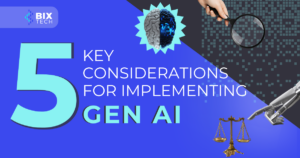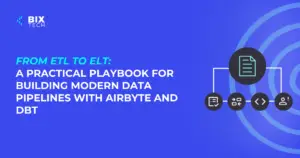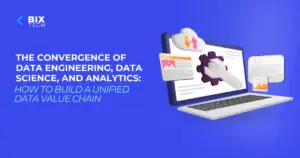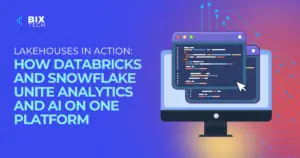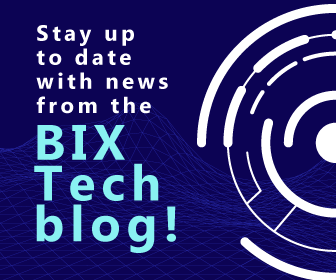Big Data Explained: What It Is, Why It Matters, and How It’s Transforming Business

Sales Development Representative and excited about connecting people
Big Data is more than just a buzzword—it’s a driving force behind the digital transformation reshaping organizations across every industry. In this comprehensive guide, we’ll dive into what Big Data actually means, explore its core characteristics, and reveal how companies are harnessing its power to stay competitive in today’s data-driven world.
What Is Big Data?
Big Data refers to the enormous volumes of data generated daily from myriad sources—websites, social media, sensors, mobile devices, and much more. Traditional data management tools can no longer keep up with the size, speed, and variety of this information. Enter Big Data technologies: a sophisticated set of programming techniques, algorithms, and computational resources designed to efficiently process, store, and analyze vast and complex datasets that conventional databases simply can’t handle.
But why did Big Data emerge in the first place? The explosion of the internet and social networking platforms radically increased the amount of digital content we produce and consume. As a result, organizations needed new ways to manage and extract valuable insights from these massive data streams—something legacy systems like SQL Server and Oracle struggle to accomplish at scale.
Types of Big Data: Structured vs. Unstructured
Big Data isn’t just about size—it’s also about complexity and diversity. The data involved typically falls into two main categories:
Structured Data
Structured data is highly organized, typically stored in traditional databases with clearly defined tables, rows, and columns. Think of numerical values, dates, or text fields—data that fits neatly into a spreadsheet. Because of its consistency and predictable format, structured data is easy to search, manage, and relate across different sources.
Unstructured Data
Unstructured data, on the other hand, is far more varied and less predictable. It includes everything from emails, social media posts, and audio files to videos, images, and sensor readings. These data types don’t conform to a specific structure or schema, making them challenging to process using conventional tools. Interestingly, unstructured information now makes up the majority of data generated worldwide—a key reason why Big Data solutions have become so essential.
While traditional analytics tools are well-suited for structured data, they struggle with unstructured sources. The real magic happens when businesses successfully integrate and analyze both types, uncovering hidden patterns and deeper insights.
The 5 V’s of Big Data
Big Data is often characterized by five defining attributes, commonly known as the “5 V’s”:
1. Volume
Volume refers to the massive amounts of data being produced every second. According to IDC, the world’s digital content doubled every two years—reaching 4.4 trillion gigabytes in 2013 and projected to soar to 44 trillion gigabytes by 2020. This staggering growth shows no signs of slowing down, especially with the proliferation of IoT devices.
2. Velocity
Velocity is all about the speed at which new data is generated, transferred, and processed. From real-time social media updates to sensor readings in manufacturing, businesses increasingly need to handle information instantly to make fast, data-driven decisions.
3. Variety
Variety captures the diversity of data formats and sources. It’s not just about transactional records anymore—Big Data encompasses everything from website logs and search indexes to sensor data and multimedia files. The ability to integrate and analyze such diverse information is what sets Big Data apart.
4. Veracity
Veracity focuses on the trustworthiness and reliability of data. For analytics to provide real value, the underlying data must be accurate, consistent, and based on real facts—not assumptions or opinions.
5. Value
Ultimately, the true potential of Big Data lies in its ability to deliver value. Whether it’s identifying new business opportunities, reducing costs, improving product quality, or enhancing customer experiences, data only matters if it helps organizations achieve measurable results.
Real-World Applications of Big Data
Big Data is revolutionizing industries far beyond just tech. Here are a few compelling examples of how organizations are putting it to work:
- Personalized Recommendations: Streaming giants like Netflix and YouTube rely on massive datasets to suggest movies and videos tailored to each user’s preferences. Spotify applies similar tactics to deliver custom music recommendations.
- Social Media Monitoring: Brands track conversations and trends across social platforms to better understand customer sentiment and manage their reputations in real time.
- Web Analytics: E-commerce sites analyze user behavior to optimize website experiences and maximize sales.
- Fraud Detection: Financial institutions use Big Data to spot irregular transaction patterns, preventing fraud and enhancing security.
- Healthcare and Medical Research: Analyzing large volumes of patient and clinical data leads to more accurate diagnoses and better treatment plans.
- Targeted Advertising: Companies leverage Big Data to deliver personalized ads, increasing engagement and ROI.
- Real-Time Traffic Management: Smart cities use sensor data to monitor and manage traffic flows, improving urban mobility.
The impact of Big Data reaches into every aspect of our digital lives, influencing everything from what we watch to how we shop and even how cities operate.
Core Technologies Behind Big Data
Managing and making sense of Big Data requires a powerful technology stack. Some of the essential tools and techniques include:
- Distributed File Systems: Enable the storage of data across multiple servers for scalability and fault tolerance.
- Massive Parallel Processing: Processes large datasets simultaneously, dramatically improving performance.
- Cloud Computing: Offers flexible, on-demand infrastructure for storing and processing data.
- Data Mining Grids: Allow for sophisticated pattern recognition and predictive analytics.
- High-Speed Networks: Ensure quick data transfer and real-time analytics.
- Advanced Algorithms & AI: Artificial intelligence and machine learning algorithms help extract actionable insights from complex data sets.
To get a deeper understanding of how Big Data and AI intersect, consider exploring our guide on the business revolution sparked by data science.
Why Big Data Matters for Every Business
In today’s hyper-competitive landscape, Big Data isn’t just a tech trend—it’s a strategic asset. When companies harness Big Data effectively, they unlock new opportunities for growth, outpace their competitors, and future-proof their operations. Whether you’re in retail, finance, healthcare, or manufacturing, leveraging Big Data can transform the way you do business.
If you’re interested in learning how to start your own Big Data journey, check out our practical introduction: What is Big Data?
Looking Ahead
Big Data continues to evolve, with emerging technologies and smarter analytics reshaping how we collect, manage, and interpret information. As data generation accelerates, the ability to extract value from these vast resources will set market leaders apart.
Stay tuned for more insights—next, we’ll dive into the key differences between Big Data and Business Intelligence and explore how these tools work together to drive digital transformation.
Ready to discover what Big Data can do for your organization? Explore our blog for more expert insights and practical guides on data, AI, and digital innovation.



